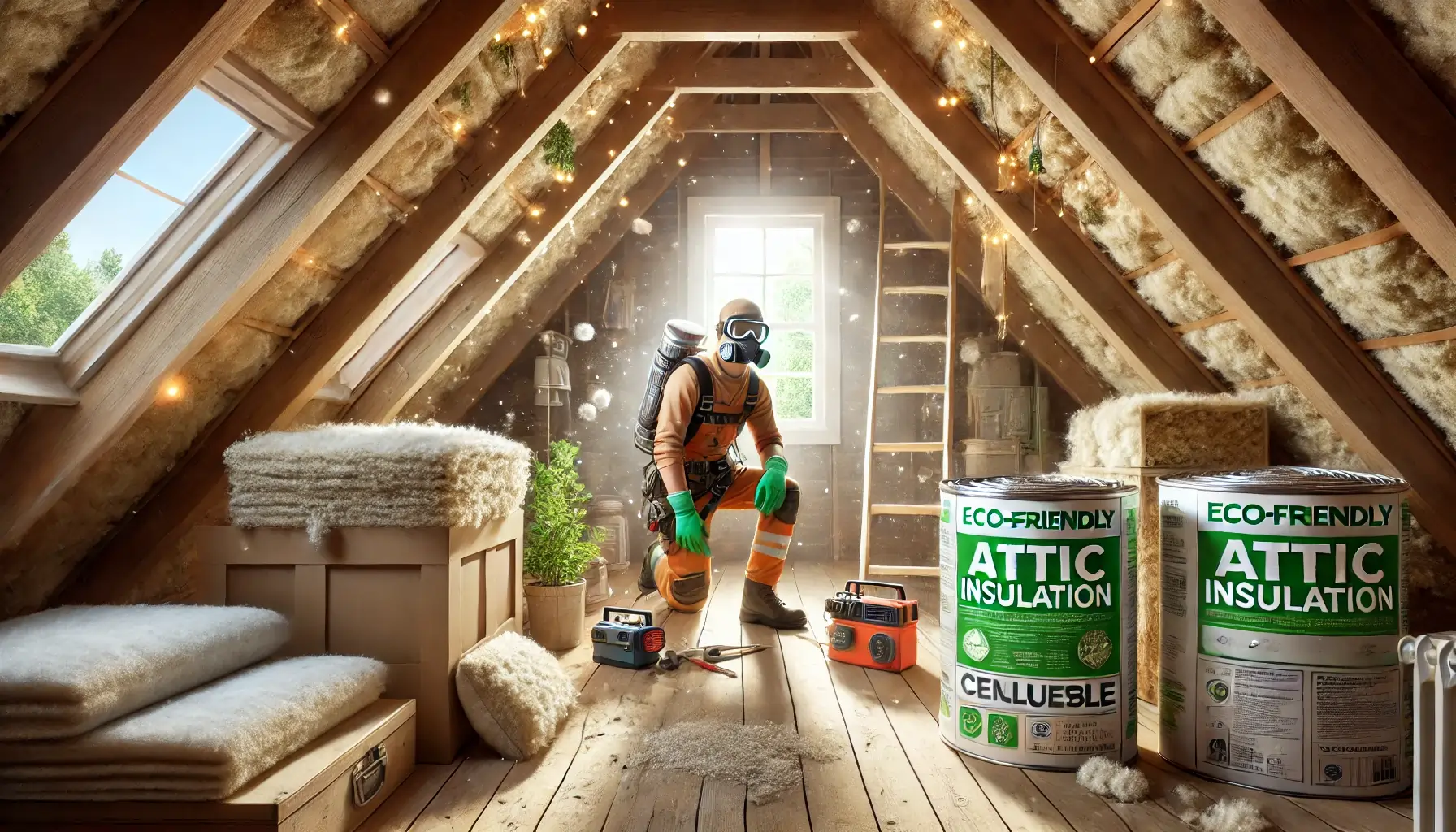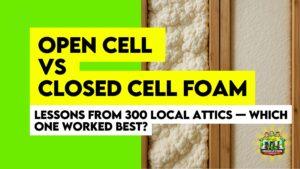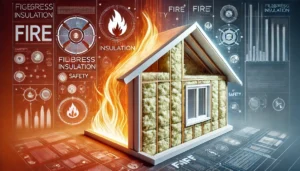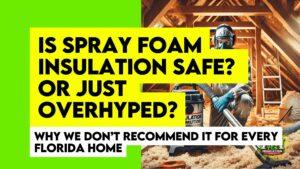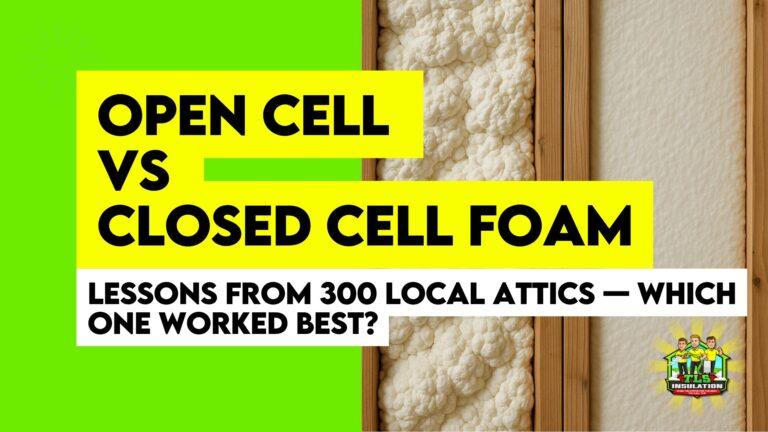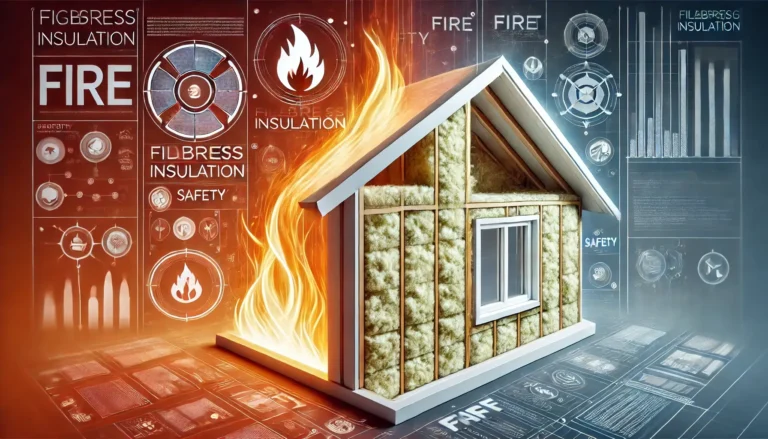The short answer is yes.
Our company, TLS Insulation, has serviced thousands of homes in south-west Florida. So long as the insulation is installed correctly inside your attic, it’s incredibly safe for your home and you have nothing to worry about.
But the concern is still real for many new homeowners. After all, wouldn’t you want to know if the cotton candy looking blow-in insulation someone is putting into your house is safe?
Every once in a blue-moon we’ll get asked questions like, “Is fiberglass insulation flammable?” or “Don’t animals like to live in attic insulation?”.
The purpose of this article is to explain to new homeowners why attic insulation is safe in your home and the reasons that make it that way.
What’s blown-in insulation made from?
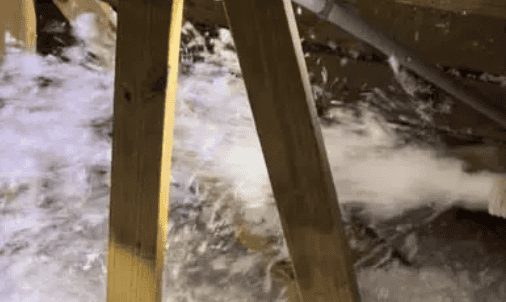
Blown-in insulation, also known as loose-fill insulation, is what we use for attic insulation. The reason why is so it can touch hard-to-reach areas of a home due to its ability to conform to the space it fills, providing excellent coverage and thermal performance.
The production process of blown-in insulation emphasizes safety.
Fiberglass is bound with a resin that not only helps the fibers stick together but also makes sure they don’t become airborne, which could be a respiratory hazard. The treatment of cellulose with fire retardants not only impedes flammability but also helps to deter pests, adding an additional layer of safety by preventing infestations that could compromise both the insulation and the structural integrity of the home.
Mineral wool and natural fibers are then treated to enhance their fire resistance and mold resistance, ensuring that they contribute to a safe home environment.
Now that we know how insulation is made, let’s poke holes in the top 4 concerns we hear most often from new homeowners.
1.) Chemical Exposure Concerns:
Worrying about exposing your family and pets to new chemicals is always a valid concern for new homeowners.
While it’s true that cellulose blow-in insulation is treated with fire retardants, the chemicals used, such as boric acid, are safe and are used in many household products.
For example, boric acid is found in most laundry detergents as a pH buffer and a fungicide, helping to prevent the growth of molds and fungus on damp clothing.
You should keep in mind that these chemicals are applied in controlled amounts to minimize any potential off-gassing.
Modern blown in insulation products are subject to stringent health and safety regulations to ensure they do not adversely affect indoor air quality. Once the insulation settles, the potential for any significant off-gassing diminishes, making it a safe choice for your home use.
In other words, there’s almost no risk in any kind of chemical exposure for you or your family.
2.) Fire Safety Misconceptions:
The assumption that attic insulation is highly flammable is a huge misconception.
The concern that cellulose, being derived from paper, could be a fire hazard is understandable but largely unfounded due to the extensive treatment it undergoes with fire retardants.
You have to understand the amount of safety steps that go into the production of blown-in insulation to get an idea of just how safe it really is for homeowners.
These treatments effectively reduce the material’s flammability, allowing it to resist ignition and slow down the spread of fire.
Fiberglass and mineral wool, on the other hand, are inherently non-combustible, providing additional peace of mind.
These materials meet national fire safety standards, ensuring that blow-in insulation is a safe option for attic insulation for your home.
In the few cases that insulation has caught on fire – it’s almost always due to poor materials and poor installation. Not to mention almost all of these cases were due to chimney fire – which isn’t too common in Florida to begin with.
Even with these concerns in mind – professional insulation installers like the ones on our team make sure that attic insulation is applied away from electrical fixtures, chimneys, and other potential sources of heat.
This careful installation mitigates any fire risks to make sure that the attic insulation not only provides thermal benefits but also enhances the overall safety of your building against potential fire outbreaks.
3.) Pest Infestation Fears:
The most common attic pest infestations we see for homeowners in Florida are mice, bats, and some small squirrels.
So does insulation give them a reason to want to move into your attic?
We mentioned that cellulose is made from organic materials, the fire retardants and other chemical treatments to prevent fire and health risks. Another benefit is that it serves to deter pests.
These treatments repel insects and rodents which would be attracted to organic materials in your attic. By altering the taste and smell of the insulation, these treatments effectively discourage nesting and colonization, providing an extra layer of protection for your home.
At the same time – anywhere that’s dark and damp is going to be a favorite for critters, meaning that if it’s easy for them to move in, insulation won’t necessarily keep them out.
If there are openings in your attic for pests to enter, they might just do that and insulation isn’t a total replacement for pest control services. Sealing off these points of entry for pests is always the best solution.
This also depends on a bunch of external factors like the location of your home, how new the property is, and more. But if there’s one thing we’re certain of – it’s that blown-in insulation alone certainly doesn’t attract pests.
4.) Moisture and Mold Concerns:
Mold is nasty and can cause thousands of dollars worth of damage if you’re not careful. In the humid weather of Florida where our customers are – we’ve seen it all.
And just like how moisture control is an important part of owning a home, it’s also a critical aspect of attic insulation. That makes blow-in insulation a part of an effective strategy to prevent mold growth in your home.
Properly installed blow-in insulation can actually aid in moisture management within the attic.
By maintaining consistent temperatures and reducing the likelihood of thermal bridging, it helps prevent condensation—the primary cause of moisture buildup. This regulation of your attic climate is essential in preventing the growth of mold and mildew, thereby protecting the structural integrity of the home.
Most modern insulation materials like the ones are team use are treated to be moisture resistant, reducing the risk of water absorption and subsequent mold issues.
By making sure that the attic is properly ventilated and that the insulation does not block soffit vents, you can maintain a dry and mold-free environment.
The most important decision you should make for insulation is who installs it.
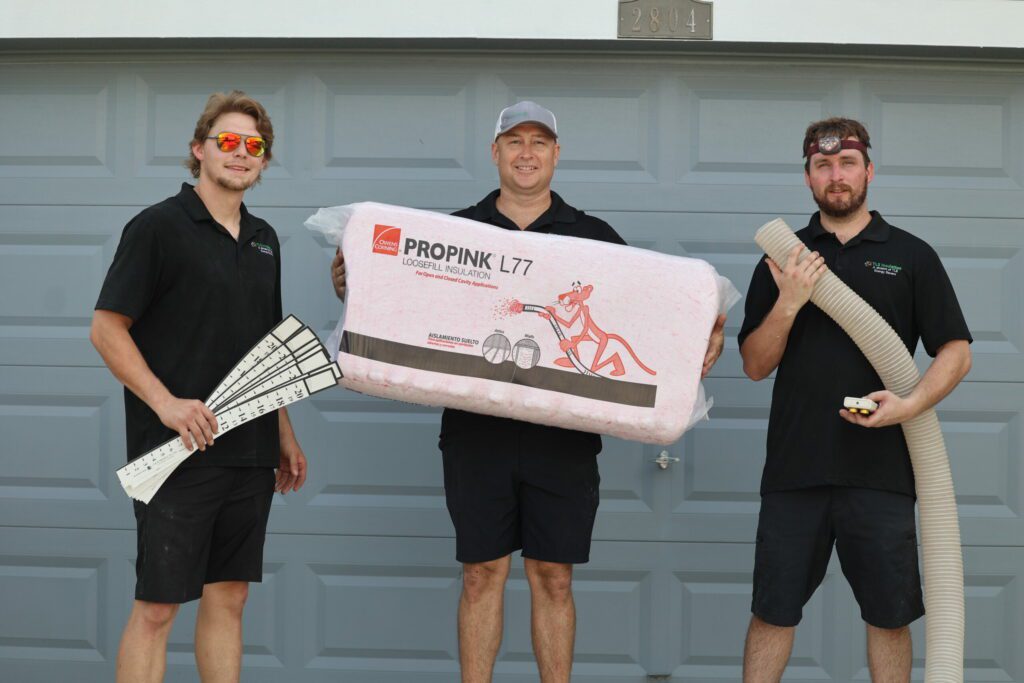
It’s not just about the insulation but about the contractors who’re responsible for installing it in your home.
You should make sure that they’re aware of the proper steps like removing old insulation, adhering to safety standards, and communicating with you.
We’ve generated a reputation in South-West Florida by genuinely caring for homeowners and answering their questions.
Wherever you are in the country, you should make sure that your attic insulation installers are competent. Unclear communication and bad competence is the biggest reason why safety concerns are so common in the first place.


